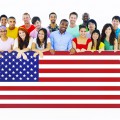In a nutshell: American business leaders risk failure abroad if they do not set aside preconceived ideas of culture.
As it turns out, it’s not a small world after all.
The Walt Disney Company learned this lesson the hard way in 1992 as it sought to repeat the success the company found in California, Florida and Tokyo. In a suburb of Paris, Disney executives created Euro Disney thinking European tourists would flock to a slice of Americana in the land of the Eiffel Tower, champagne and croissants.
Assuming Europeans would want to stroll down Main Street USA, be willing to take their children out of school for a Disney trip, and forego wine and beer in a U.S.-style family-friendly environment were the entertainment giant’s most notable mistakes.
The outcome of these mistakes in planning Euro Disney, now Disneyland Paris, was evident on Day One. Attendance numbers were well below projections (500,000 were expected on opening day in 1992, but only 50,000 showed up), and the park took on a significant amount of debt.
In all of Disney’s planning, the company displayed ethnocentrism, the tendency to view other cultures through the lens of your own. Ethnocentrism, at its core, is cultural arrogance.
In assuming Europeans had the same love for Disney characters that Americans did, and rolling out a Europe-wide marketing campaign without cultural customization for different countries and regions showcased Disney’s own ethnocentrism.
Lessons to Be Learned
Disneyland Paris is used frequently in business courses to discuss the role culture plays in global expansion. Ethnocentrism can sink products, business relationships and organizational reputations.
When embarking on an international venture, it’s important to remember that your values, aesthetics and cultural norms are no better than the ones in your target country.
Before doing business abroad, you should research the customs, behaviors and values of the new country, and hire consultants familiar with that culture.
You should also remember that success in one country does not guarantee success in another. Disney executives were overconfident about their prospects for Disneyland Paris due to the successful opening of Disneyland Tokyo in 1983. However, the comparison of cultures reveals a stark contrast: Most notably, Japanese children had grown up with Disney characters and loved them. Also, the company only needed a single marketing strategy to reach Japan’s vacation market.
When it came to planning Disneyland Paris, Disney executives ignored local advice. European business leaders expressed their concerns, only to see them dismissed as European conservative thinking.
How to Assess a Different Culture
There are a handful of cultural dimensions that will help you understand foreign countries better. Start by looking at how family units are structured – some countries opt for smaller family units, while others might have multiple generations living under one roof.
Religion plays an important role in many places; religious imagery in advertising might tap into these emotions or backfire and damage a brand. Schooling is also important, as it’s easier to communicate sophisticated ideas and market products in a society that’s highly literate.
History and politics cannot be ignored. History can affect the national character, and politics can dictate what products you can and can’t introduce. A very protectionist, highly nationalist country might reject American goods and services. And, in some countries, there is a risk that the government will seize foreign investments, or make it difficult to get profits out of the country.
The Role of Technology in Culture: The Netflix Example
Technology is often considered an infrastructure challenge, but it also has a cultural dimension that can limit foreign impact. When Netflix was introduced in Brazil, many people lacked high-speed internet access, both in their homes and on their mobile devices. Few people signed up at first, and even fewer were watching.
Netflix paid the bill for new web servers across the country, working with telecom providers directly. Doing so changed the cultural attitude toward streaming video and entertainment. Today, Netflix is considered a success in Brazil – and the company has a blueprint for how to enter other countries with poor infrastructure and no experience with streaming video.
Putting the Pieces Together
Disney eventually learned its lesson in Paris. It segmented its marketing efforts to different European countries, and made changes more in line with French attitudes – including wine in the parks. It added a second park with a movie focus, paying homage to both American and European films.
Disney leaders took similar steps to ensure the success of their next theme park in Hong Kong, which opened in 2005. This included hiring feng shui experts to help with placement of buildings and objects, the addition of a Chinese-style garden, modification of menus and the removal of fourth-floor signage from all hotel buildings. (Four is considered unlucky in China, just like 13 is in the United States.)
And at Disneyland Shanghai, which opened in 2016, leaders took even more cues from Asian culture because Chinese consumers did not grow up with the classic Disney characters. The park leans less on classic Americana in favor of Chinese preferences and tastes, and there is a large Chinese garden in addition to other themed areas.






